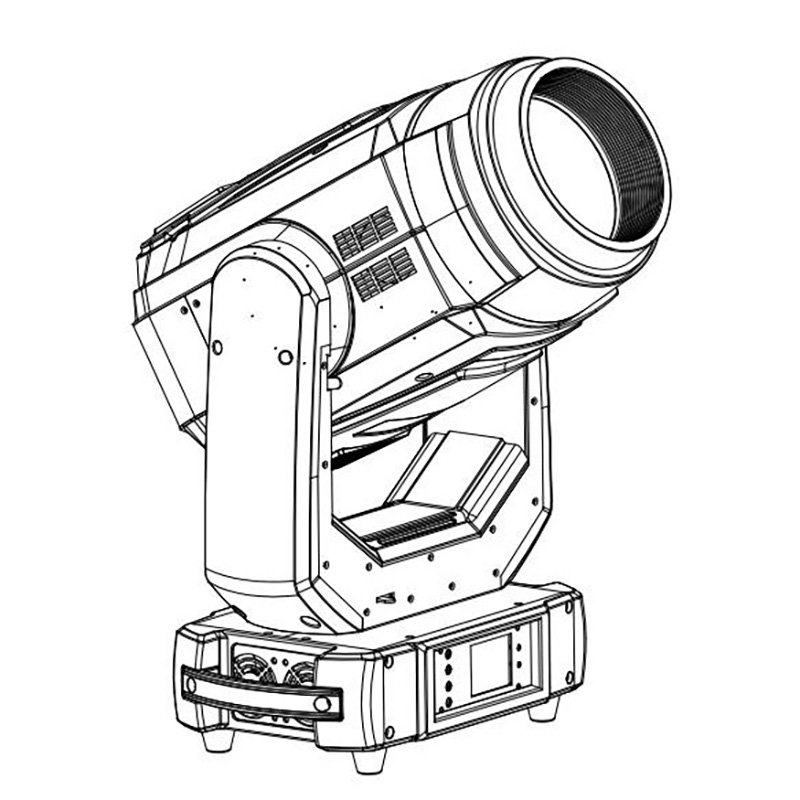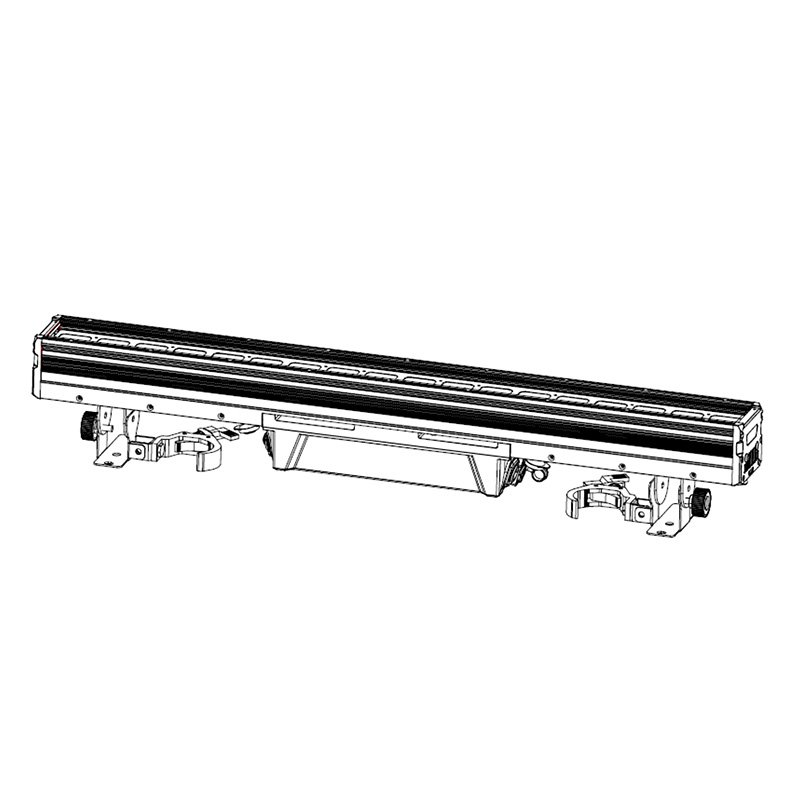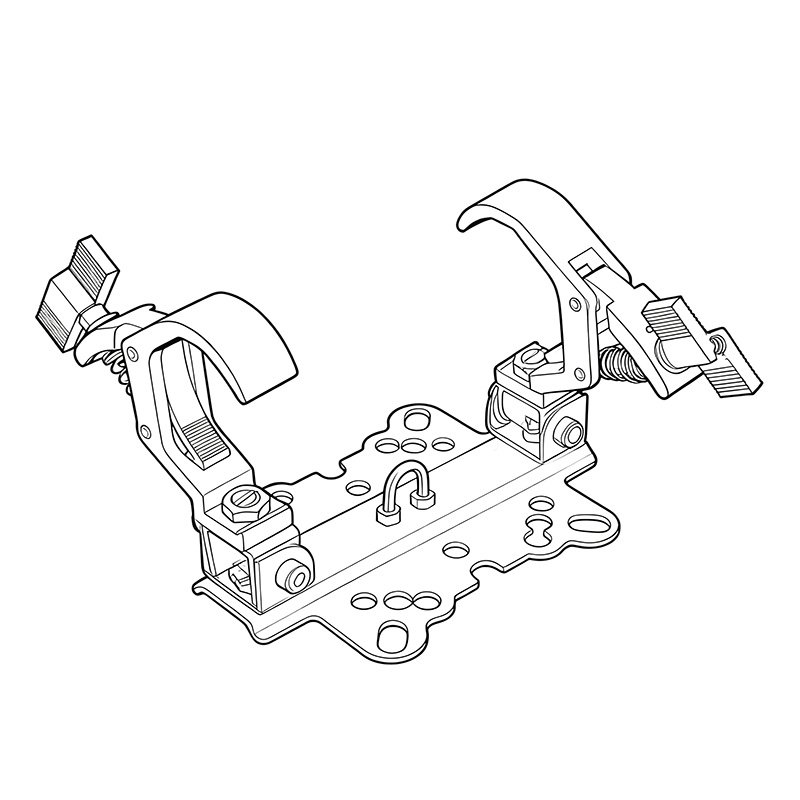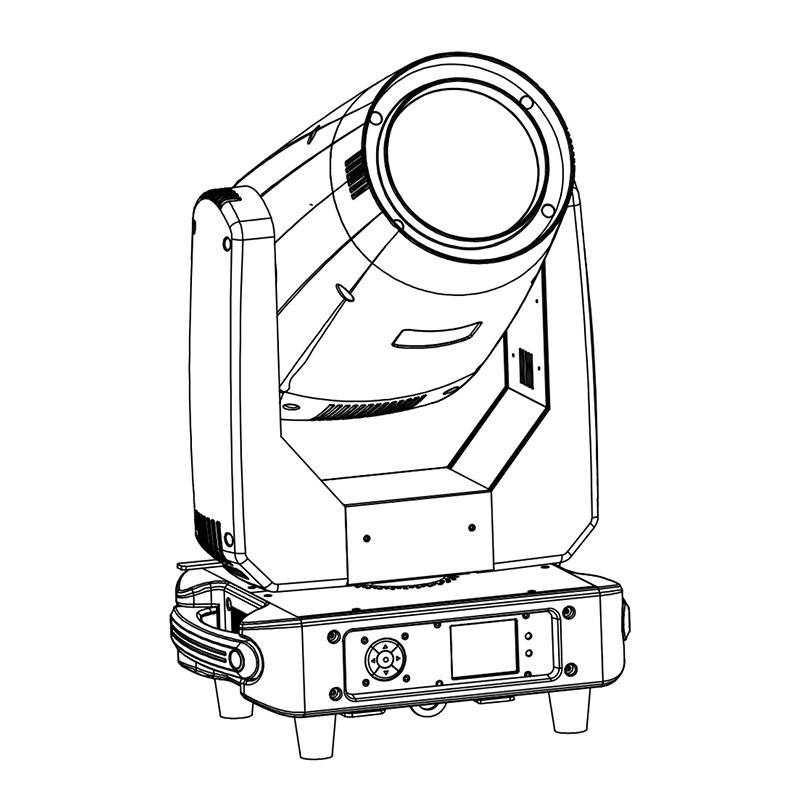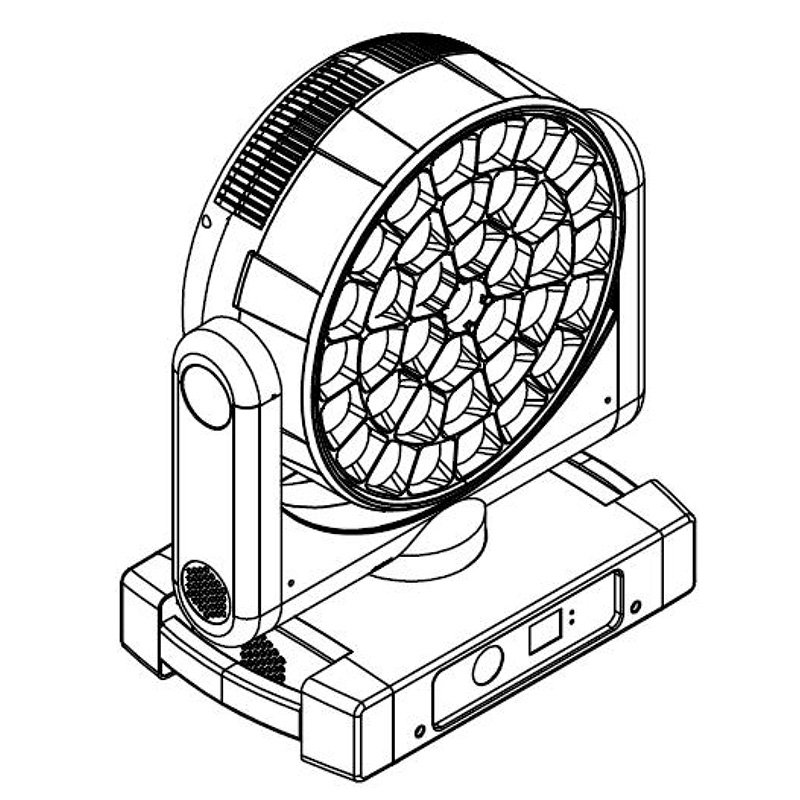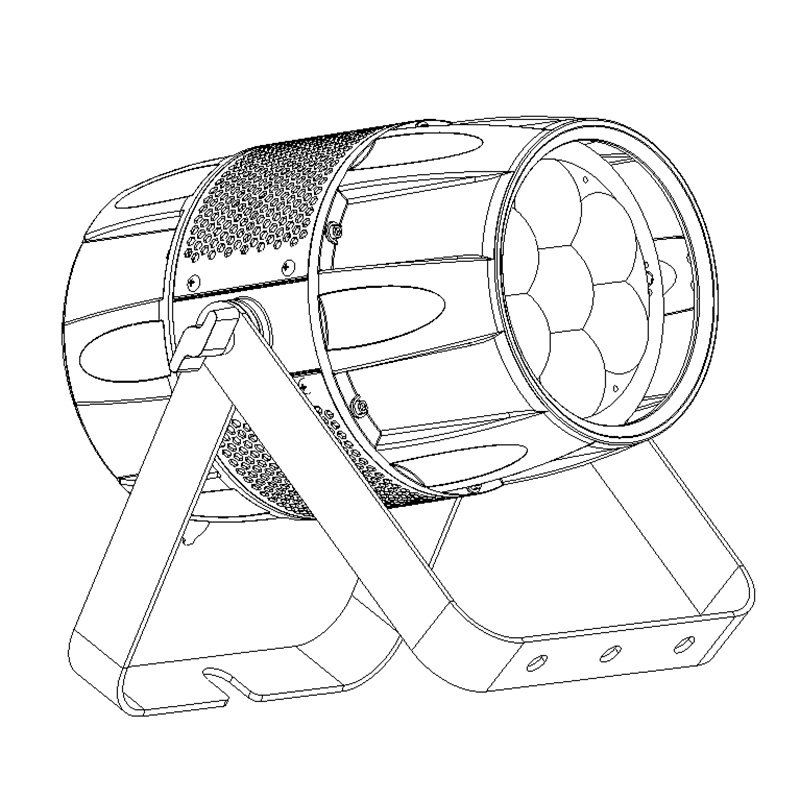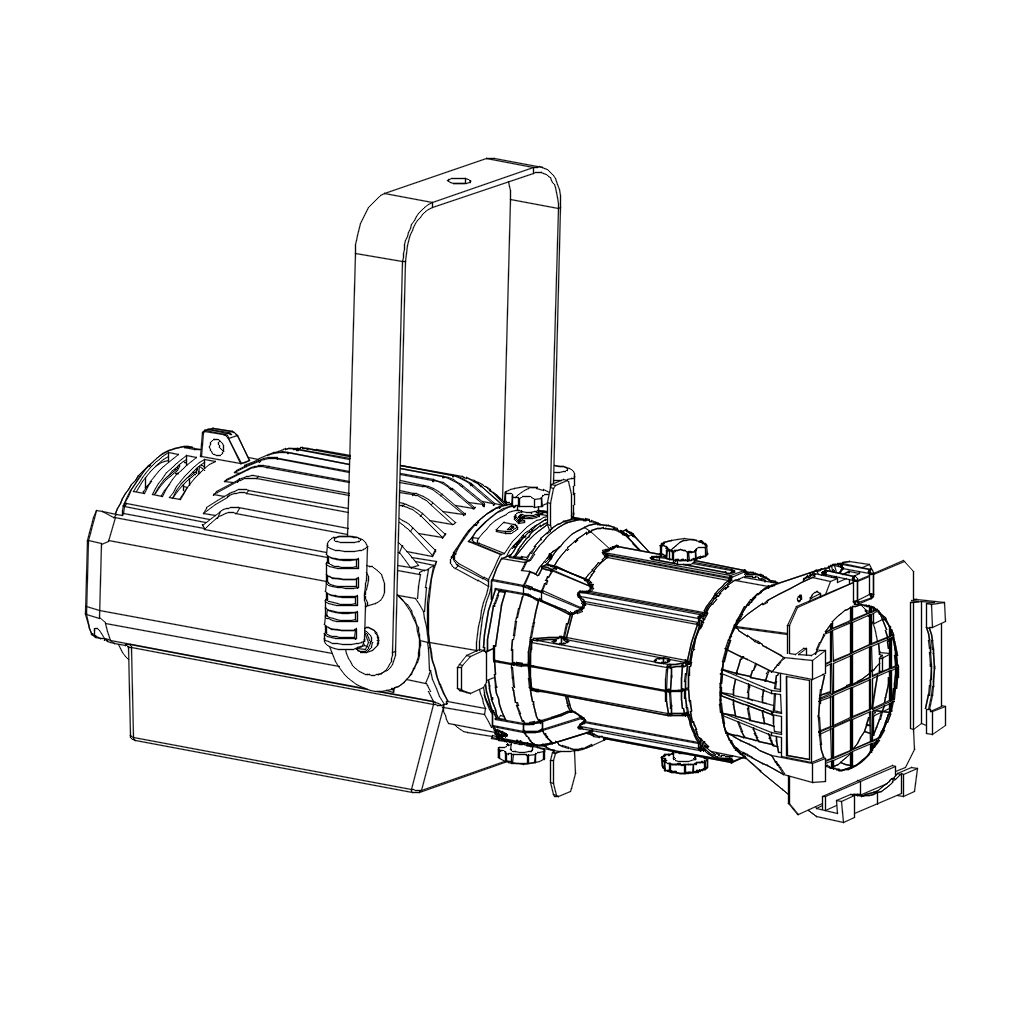Struggling to create those sharp, eye-catching light beams for your stage? Confused about the tech behind beam moving heads? This guide breaks down how these lights deliver such stunning impact.
Beam moving head lights achieve their power through specialized optical designs using lenses and reflectors to focus light from a high-intensity source (lamp, LED, or laser) into a very narrow, concentrated beam, typically under 5 degrees, allowing it to cut through haze and remain bright over long distances.
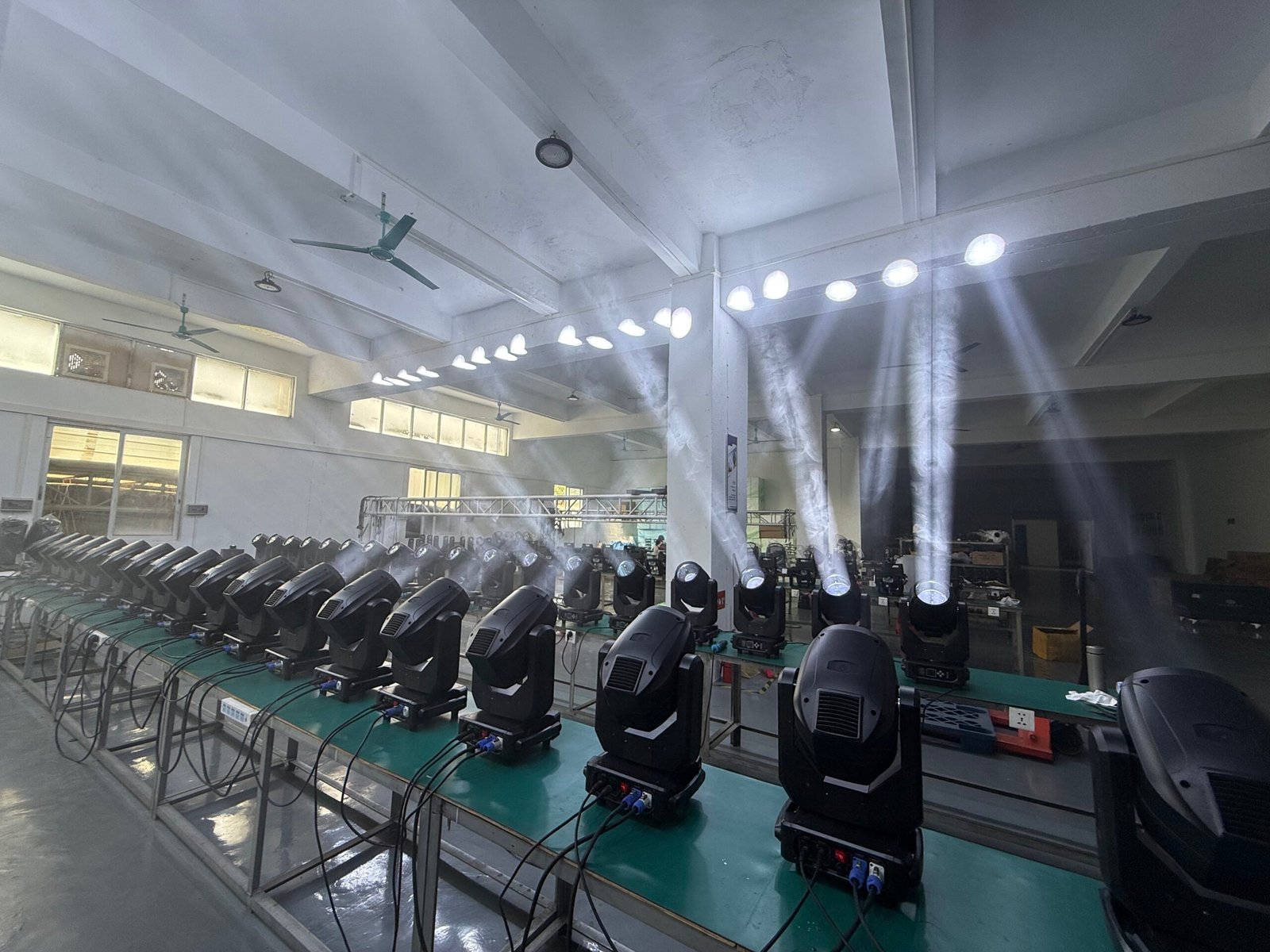 Beam moving head factory
Beam moving head factory
Now that you know the basics of their power, you might be wondering what defines these fixtures. Let's dive deeper into what exactly a beam moving head light is and why it's become such a staple in modern lighting design, helping you understand if it's the right tool for your needs.
What Exactly Is a Beam Moving Head Light?
Ever seen those razor-sharp beams of light cutting through the air at concerts? Wondering what fixture creates that intense effect? It's likely a beam moving head light, a specialized tool in the lighting world.
A beam moving head light is a stage lighting fixture specifically engineered to produce a very narrow, highly focused beam of light, usually with an angle less than 5 degrees. Its key purpose is creating dramatic mid-air effects and defined shafts of light.
So, what makes this narrow beam so useful? Think about large venues or outdoor festivals. A standard wash light spreads its light out, losing intensity quickly over distance. A beam light, however, concentrates almost all its output into that tight column. This allows it to punch through atmospheric haze or fog, creating visible lines and shapes in the air that audiences love. It's not really designed to light up performers or scenery broadly; its main job is visual impact and dynamic aerial effects. I often explain to clients like Marco, who runs a production company, that if you want beams that look like lasers without being lasers (or sometimes, with lasers!), the beam moving head is your go-to fixture. Its ability to move quickly (pan and tilt) adds another layer of dynamism, letting designers paint the air with light.
How Do Beam Moving Heads Create Such Intense Beams?
Want those incredibly bright, almost solid-looking beams for your show? Confused about the technology that makes them so much sharper than other lights? The secret lies entirely in their specialized optical design.
Beam moving heads use a combination of high-intensity light sources, precisely shaped reflectors (often parabolic), and advanced lens systems to collimate light into a tight, parallel beam. This minimizes spread and maximizes perceived brightness, even at long distances.
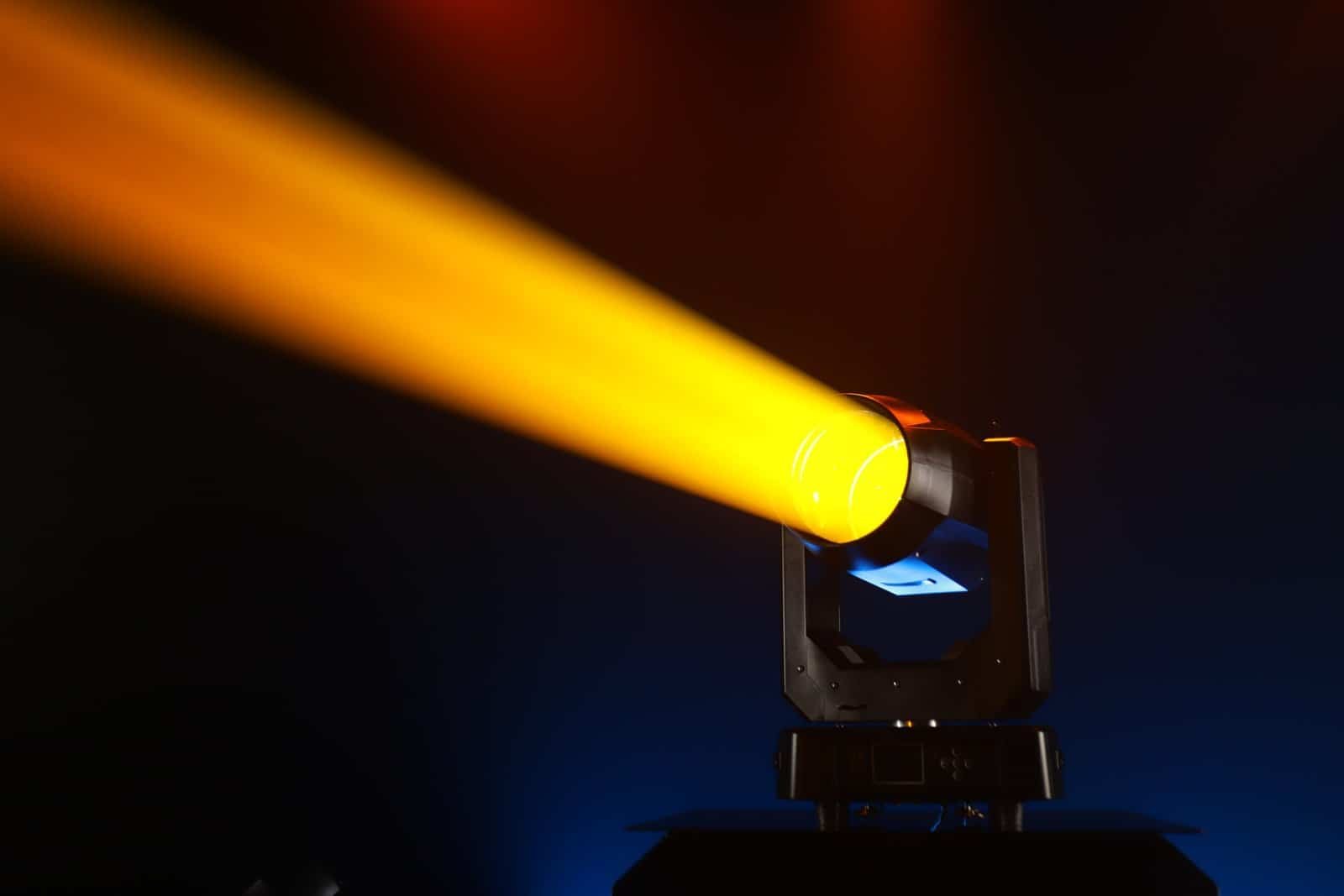 390w beam moving head light
390w beam moving head light
Let's break down how this optical magic works. Unlike a wash light designed to spread light evenly, a beam light's goal is the exact opposite. It starts with a very bright, compact light source – historically a discharge lamp, now often powerful LEDs or even lasers. This source is placed at the focal point of a carefully designed reflector, often parabolic, or paired with a sophisticated lens assembly. The idea is to capture as much light as possible and force the rays to travel parallel to each other. This process is called collimation. Think of it like focusing sunlight with a magnifying glass, but instead of converging to a point, it makes the light rays travel straight forward in a tight bundle. The result is that famous razor-sharp beam with a strong 'hot spot' in the center. Features like internal frost filters can soften the edge slightly if needed, and focus mechanisms ensure the beam stays sharp whether it's hitting a surface nearby or projecting 50 meters across a venue. It's this focused power that makes them appear so incredibly bright and cut through everything else.
Lamp vs. LED vs. Laser: Which Light Source is Best for Beam Lights?
Choosing a new beam light? Feeling overwhelmed by the different light source options – traditional lamps, modern LEDs, or cutting-edge lasers? Each has its own strengths and weaknesses impacting performance and cost.
Lamps offer intense hot spots ideal for piercing effects but have shorter lifespans. LEDs provide long life, efficiency, and smooth beams but can seem less punchy. Lasers deliver extreme brightness and precision but come with higher costs and regulatory hurdles.
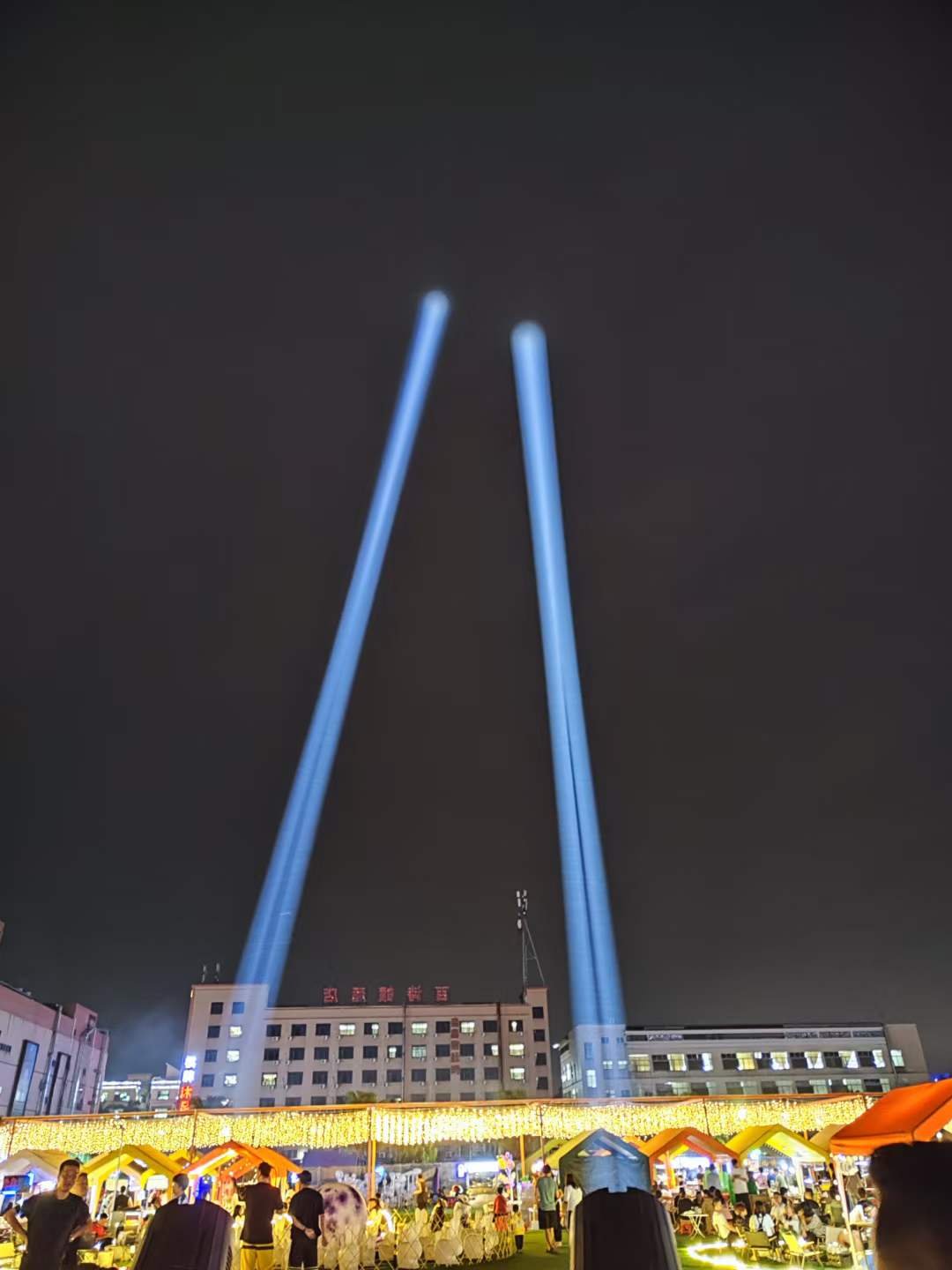
Let's dive deeper into each option. Discharge lamps (like the common 230W, 380W, or 470W types) were the original standard. They excel at creating a very bright center 'hot spot' which gives the beam incredible visual punch and makes it seem very intense, perfect for cutting through other stage lighting. However, they run hot, consume more power, and the lamps typically only last 1,500-2,000 hours, meaning regular replacement costs.
LED modules or COBs (Chip-on-Board) are now very common. They offer vastly longer lifespans (often 20,000-50,000 hours), much lower power consumption, and less heat output. The beam from an LED source tends to be very smooth and uniform, without the intense hot spot of a lamp. While technically very bright, some designers feel they lack the visual 'aggression' of a lamp beam. They represent a great balance of performance and low maintenance, especially for fixed installations or rental houses prioritizing reliability. I've seen many clients switch to LED for reduced running costs.
Laser sources are the newest frontier. These offer unparalleled brightness, incredibly sharp and parallel beams (almost zero divergence), and very long lifespans. They are fantastic for extremely long throws or creating graphic-like effects. However, they are the most expensive option and, crucially, often face strict safety regulations (like FDA certification in the US) which can add complexity and cost to importing and using them.
Here's a quick comparison:
| Feature | Discharge Lamp | LED Module / COB | Laser Source |
|---|---|---|---|
| Visual Punch | Excellent (strong hot spot) | Good (smooth, uniform) | Extreme (very sharp, precise) |
| Brightness | Very High | High | Extremely High |
| Lifetime | ~1,500-2,000 hrs | ~20,000-50,000 hrs | ~20,000-30,000+ hrs |
| Efficiency | Lower | High | Very High |
| Maintenance | Regular lamp changes | Minimal | Minimal (but consider regulations) |
| Cost | Lower initial, ongoing lamp cost | Mid-range | Highest initial, potential reg costs |
| Best For | Touring, budget impact | Installs, clubs, reliability | High-end shows, long throw, FX |
The choice depends on your priority: raw punch, long-term value, or ultimate performance and precision.
How Do Power Ratings and DMX Control Affect Beam Light Choices?
You understand the optics and light sources, but how much power do you actually need? And how do you control these dynamic fixtures once you have them? These practical aspects are crucial for making the right choice.
Power ratings (wattage) determine the fixture's brightness and throw distance, needing to match your venue size. DMX control allows precise manipulation of movement (pan/tilt), color, gobos (if present), prisms, focus, and other effects via a lighting console.
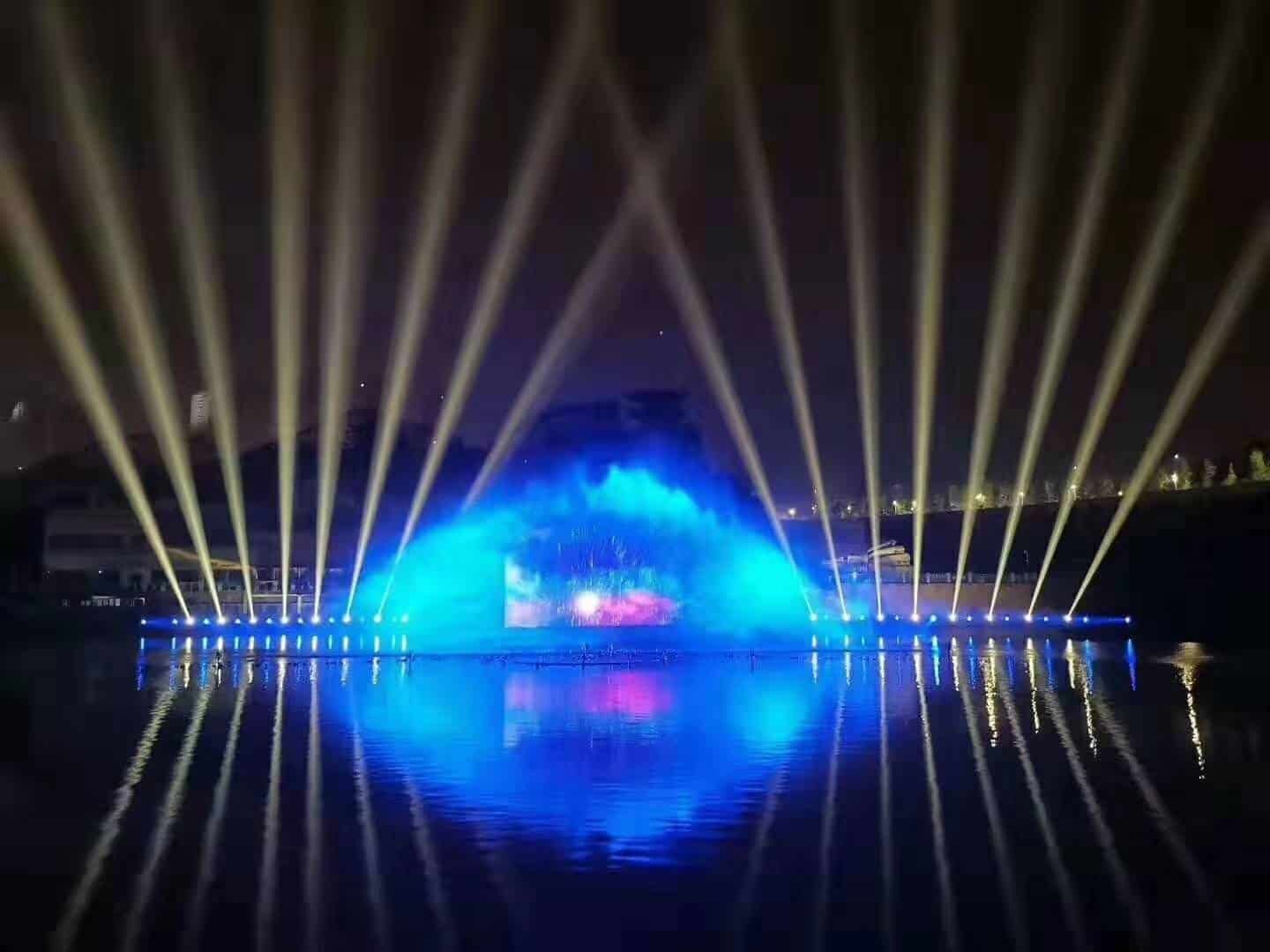
Let's look at power first. Beam lights come in various wattages, roughly correlating to their brightness and how far they can effectively project that sharp beam. A small 100W LED beam might be perfect for a mobile DJ or a small club ceiling, but it would get lost in a large theater or arena. Conversely, a massive 470W or 600W lamp-based beam is overkill (and expensive) for intimate spaces but essential for stadium tours or large outdoor festivals. As a general guide (though specifics vary by manufacturer and optics):
| Wattage Range | Typical Application Scene | Best Suited For |
|---|---|---|
| 100W–150W | Small clubs, mobile DJs, bars | Budget-conscious, small venues |
| 200W–300W | Mid-size clubs, weddings, events | Balanced performance/cost |
| 380W–470W | Theaters, concert halls, tours | Professional productions |
| 500W+ | Arenas, stadiums, festivals | Maximum impact, long distances |
Consider your typical venue size and required throw distance when choosing wattage.
Then there's control. Virtually all professional beam moving heads use the standard DMX512 protocol. This allows you to connect them to a lighting desk or software controller and manipulate their functions in real-time. Common DMX channels control:
- Pan: Left/right movement.
- Tilt: Up/down movement.
- Dimmer: Brightness intensity (0-100%).
- Strobe: Flashing effects (variable speed).
- Color Wheel: Selecting different colored filters.
- Gobo Wheel: Projecting patterns (less common on pure 'beam' fixtures, more on hybrids, but sometimes included).
- Prism: Splitting the beam into multiple beams (e.g., 8-facet, 16-facet) and rotating them.
- Focus: Adjusting the beam's sharpness.
- Frost: Softening the beam edge.
More advanced fixtures might also support protocols like RDM (Remote Device Management) for easier setup and monitoring, or network-based protocols like Art-Net or sACN for large-scale systems. Ensuring the fixture's control features match your console's capabilities and your creative needs is vital.
What Key Factors Should I Consider When Buying Beam Moving Heads?
Ready to invest in some beam lights? Feeling hesitant about pulling the trigger with so many options available? Focusing on a few key factors will help you make a confident decision.
When buying beam moving heads, prioritize the light source (lamp/LED/laser) based on desired effect and maintenance, match the power rating to your venue size, ensure DMX compatibility, check certification needs (especially for lasers), and balance features against your budget.

Let's walk through these crucial considerations. First, the Light Source: As we discussed, do you need the aggressive punch of a lamp, the efficiency and longevity of an LED, or the precision of a laser? Think about the look you want and how much maintenance you're prepared for. Lamps mean buying replacements, while LEDs are largely fit-and-forget. Lasers add regulatory checks in some regions, like the US needing FDA classification, which can impact import/use. I always ask clients about their tolerance for maintenance versus upfront cost.
Second, Power Rating (Wattage): Don't under-spec. Choose a wattage appropriate for your most common venue size and throw distance. A light that looks great in a small room might disappear on a big stage. Refer back to the typical wattage ranges for guidance. Getting a demo or seeing beam shots in a comparable space is always a good idea.
Third, Control Compatibility: Does the fixture use standard DMX512? Does it have the specific features you need (e.g., rotating prism, specific colors)? If you use advanced networking, check for Art-Net or sACN support. Ensure the DMX channel count and profile are manageable with your controller.
Fourth, Certification Needs: This is critical, especially outside standard CE/RoHS. If considering laser-source beams, verify the legal requirements in your country or the countries you might tour in. Failing to meet regulations can lead to customs issues or fines. We at Aolait ensure our products meet CE/RoHS, and can advise on specific market needs.
Finally, Budget vs. Features: Beam lights range significantly in price. Determine your budget and find the best balance of brightness, features, build quality, and light source type within that range. Remember to factor in potential maintenance (lamp costs) or the long-term value (LED lifespan) when comparing prices. Sometimes paying a bit more upfront for reliability or desired features saves money and headaches down the line.
Conclusion
Understanding beam moving head lights – their optics, light sources, power, and control – empowers you to choose the right fixtures. Whether you need lamp punch, LED efficiency, or laser precision, matching the tech to your needs creates stunning results.

